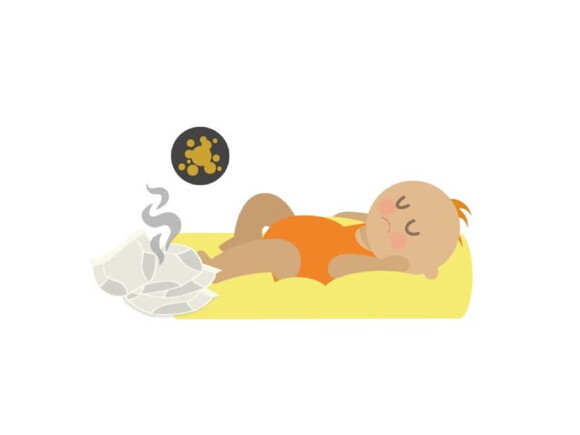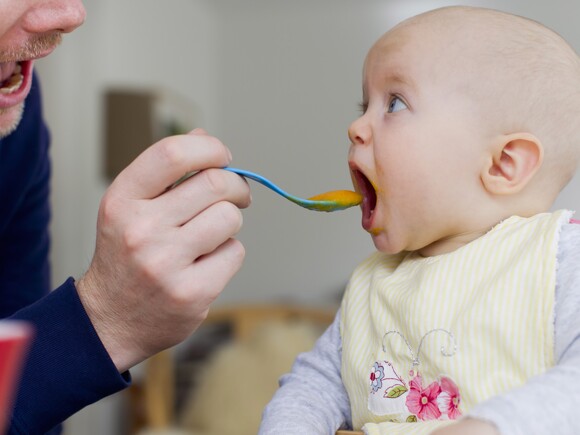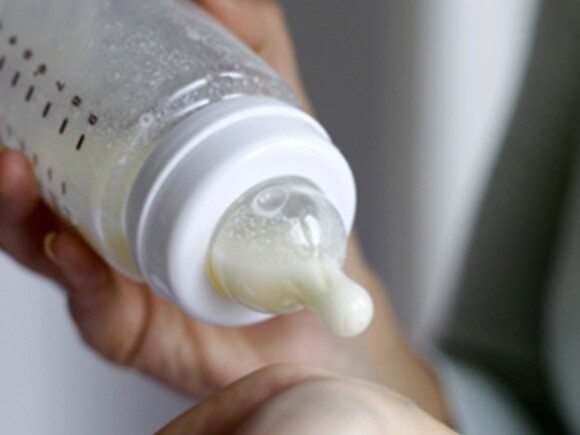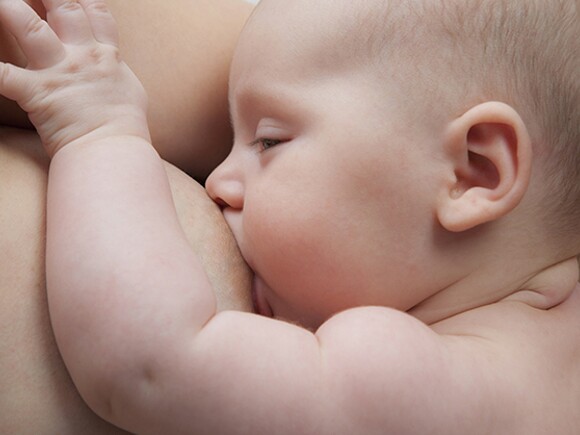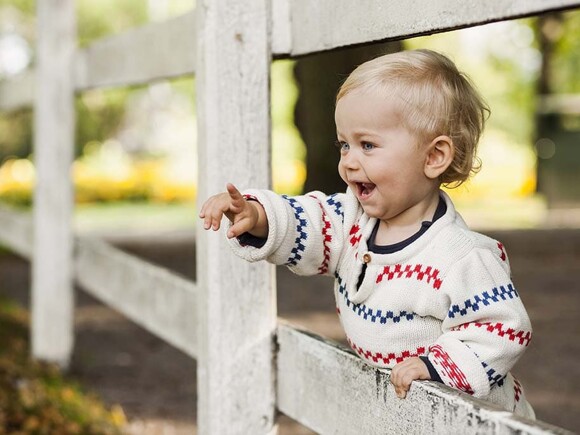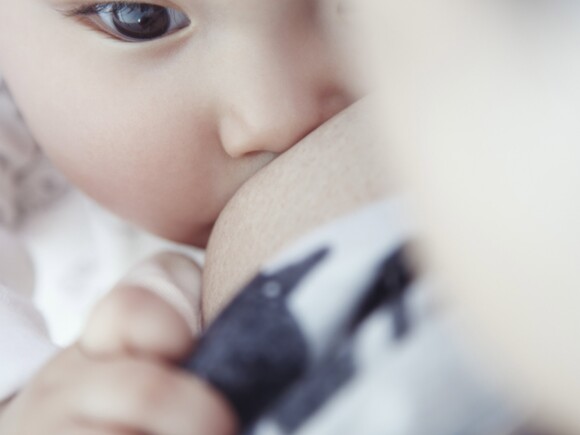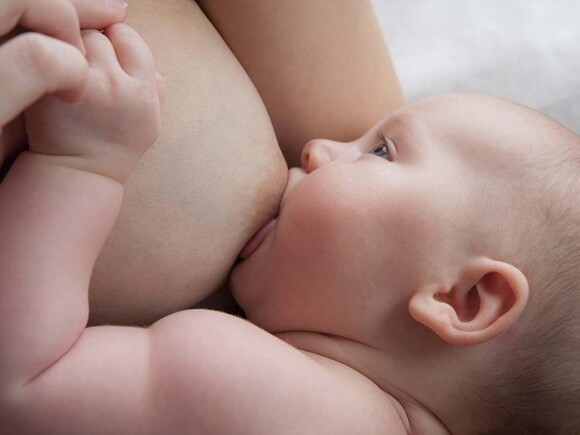During your first year of parenthood, you will change about 2,300 diapers. As you become familiar with your child’s bowel movements, you will realize their poop tells can tell you a lot.
The colour, texture, and consistency of your baby’s stools will change during their first 12 months, and it can be hard to know what is normal. Most changes to your baby’s stools are caused by changes of diet and there are a variety of "normal" stool colours you’ll likely see. It is important to know what is typical and what to expect at different life stages.
Talk with your doctor if you are curious or concerned about your baby’s poop colour(s).
Baby Poop by Colour
Black
Your baby's first bowel movements will be black or dark green and have a tar-like consistency. This may come as a surprise to new parents but this is your baby passing meconium. Meconium is the waste that has been collecting throughout your baby’s intestines before they’re born. Most newborns will finish passing meconium within one day after they’re born.
Green
Your baby's poop may turn from black to army green or yellowy-green the first few days after they are born. These are called transitional stools. Your baby’s poop changes in colour and consistency when they begin digesting breast milk and/or formula and they are finished passing meconium.
It’s also normal for babies to have green stools, and some infant formulas may cause greenish poop.
Yellow
Opening your baby's diaper to find yellow poop might be shocking at first but it is in fact a normal colour for your little one's stool!
As meconium passes after the first few days of their life, your infant will begin producing yellow or yellowy-green poop. This vibrantly coloured and more watery poop is common in breastfed babies, and it may appear to have seed-like pieces in it. Formula-fed babies more often have darker and greenish poop that is less watery.
A sudden increase in watery poops that are more frequent and may be brighter yellow may be a sign of diarrhea. Talk to your doctor if you are worried about diarrhea in your baby. Always trust your gut.
Red
Red baby poop can appear in your child's diaper at any age. It may be due to something they ate or potentially from blood being present in their stool. Below are some common foods and medications that may turn your child's stool red:
- Tomato juice
- Beets
- Antibiotics such as Amoxicillin and Cefdinir
If you have not introduced any red solid foods, pink or red streaks may mean there is blood present in your child's stool. If your baby is passing hard stools that have red streaks in it, talk to your doctor. These may not be signs of anything serious, but you should consult your doctor to rule out milk allergy, a rectal fissure or tear, or an infection.
Call your doctor immediately if your little one’s poop is maroon or very bloody.
White or Grey
You should call your doctor right away if your baby's poop is white or grey. At any age, a white or grey and chalky stool is unusual and may indicate that your baby is not digesting food well or that your baby’s liver is not producing enough bile.
Baby Poop by Diet
Breastfed Baby Poop
If you are breastfeeding your baby, it is normal for their poop to be pasty and less solid than that of formula-fed babies. Babies who are breastfed may have mustard yellow coloured stools and it may appear to have seeds in it. Many parents who breastfeed their babies will worry that their child has diarrhea due to the colour and watery texture of the stool but don’t fret! This is one of the many "normals" you will encounter when it comes to your breastfed baby’s poop.
Formula-Fed Baby Poop
There are some noticeable differences between the bowel movements of formula-fed babies versus breastfed babies. Formula-fed baby poop may be more greenish coloured and darker than breastfed infant stools. Formula-fed baby stools may also be firmer and thicker.
Whether you’re formula-feeding or breastfeeding, become familiar with your baby's bowel movements. Keep track of how many times a day you are changing diapers to ensure they are getting enough milk. In general, babies should be having at least three movements each day within the first six weeks after birth.
Stools After Weaning and Solid Food Introduction
When you begin weaning your baby and introducing solid foods into their diet, you will notice a change in their stools. Babies who eat a variety of food will have bowel movements that vary in colour and consistency. New foods such as fruits and vegetables may result in softer poop of different colours. For example, a baby who eats green vegetables may pass green stools. You might also notice pieces food that have not been fully digested, but rest assured, once they become fully weaned, their poop will start becoming more similar to that of adults.
Baby Poop by Texture and Consistency
Diarrhea
Sometimes, it may not be easy to tell if your baby has diarrhea at first due to the variety of consistencies and colours baby poop can be. Baby diarrhea may be recognized by an increase in the number of watery stools that may happen closely after feedings. Explosive diarrhea may be a sign of a bacterial or viral infection. Diarrhea can be more serious in babies because they’re more at risk of dehydration than adults or older children.
If you are concerned that your baby or toddler has diarrhea, it is important to contact your doctor.
Some probiotics, like Gerber® Supplements for Baby Diarrhea Relief help to manage certain types of diarrhea.
Hard Consistency
Constipation is rare in babies who are fed breast milk or formula, before the introduction of solid foods. At around six months, when your baby’s diet changes so will their bowel movements. It’s normal for the colour, odour, consistency, and frequency of baby’s poop to change as you introduce your little one to a variety of solid foods.
Parents may notice their babies experience constipation as they move to drinking whole cow’s milk at 9-12 months of age. Toddlers shouldn’t drink more than 750 mL (or 3 cups) of whole cow’s milk per day and juice should be limited too as juice doesn’t have fibre. Too much milk or juice can take up room for other foods that have more fibre.
If your baby is having infrequent bowel movements that are pebble-like and dark brown, this could be a sign of constipation. If vomiting or other symptoms accompany your baby’s constipation, consult your doctor because this can be a sign of dehydration.
Talk to your doctor if you have questions about your child having constipation or if their constipation persists.
Supplements specifically for baby constipation, like Gerber® Supplements for Baby Constipation Relief may help to gently relieve constipation in your baby.
Contains Mucus
At some point, you may notice mucus in your baby’s stool. A baby poop with mucus usually looks greenish with shiny “strings”. There are many reasons for mucus in baby poop, with most of them not cause for serious concern.
In newborns, stools containing mucus are expected as they begin to pass meconium. As babies enter the teething stage, they may swallow their drool which will then appear in their poop. Some other reasons your baby’s stools may have mucous include food allergy, a viral infection, and, rarely, malabsorption of nutrients from breast milk or formula.
Mucus in baby poop can be a shock to parents as it does not seem normal. It’s important to remember there are so many "normals" when it comes to baby poop.
Consult your doctor if you are concerned about mucus in your baby’s poop.
Baby Poop Concerns
As a parent, it can be hard to know what's a concern when it comes to your baby’s bowel movements. Contact your doctor if you notice the following symptoms:
- Black stools (when your infant has already passed meconium)
- White or grey poop
- Deep red or bloody stools
- Hard stools with excessive straining
- Excessive water and or mucus in stools
- More stools than normal according to your baby's usual schedule
As your baby’s diet and routine changes in the first year, their poops will also change in colour, odour, and consistency. Their habits and routines will seem like they're changing every single day.
Make a note to look out for concerning signs but don’t panic. Chances are what they're experiencing is just one of the "normal" baby poop stages.
Sources
1. SickKids. AboutKidsHealth. Meconium and meconium-related conditions. 2013. https://www.aboutkidshealth.ca/Article?contentid=1115&language=English Accessed August 9, 2023.
2. HealthLinkBC. Bowel Movements in Babies. 2023. https://www.healthlinkbc.ca/pregnancy-parenting/parenting-babies-0-12-m…. Accessed August 9, 2023.
3. Health Canada, Canadian Paediatric Society, Dietitians of Canada, & Breastfeeding Committee for Canada (2014) Nutrition for healthy term infants: Recommendations from six to 24 months.
4. Watson, S. The Scoop on Baby Poop. Grow by Web MD. 2022. https://www.webmd.com/parenting/baby/the-scoop-on-baby-poop Accessed July 17, 2023.
5. Schmidtt, B. Stools – Unusual Colour. American Academy of Pediatrics. 2023. https://healthychildren.org/english/ages-stages/baby/pages/the-many-col…? Accessed July 17, 2023.
6. Canadian Paediatric Society. Healthy bowel habits for children. 2018. https://caringforkids.cps.ca/handouts/healthy-living/healthy_bowel_habi…. Accessed July 17, 2023.
7. Sick Kids. AboutKidsHealth. Abnormal-looking stool (poop). 2023. https://www.aboutkidshealth.ca/Articlecontentid=4&language=English# Accessed August 9, 2023.
Join
Your parenting instincts, our support
SIGN UP & GET A CHANCE TO WIN
Sign up for Nestlé Baby & me and automatically be entered for a chance to win a $100* gift card!
For full details, please visit the Terms & Conditions.
PERSONALIZED EMAILS & SUPPORT
Receive customized email updates with useful info, special offers, and product suggestions to help guide you through each parenting phase and celebrate your milestones along the way.
HELPFUL TOOLS & RESOURCES
Need a hand with something? We’ve got you covered! Access our helpful and interactive parenting tools and resources like calendars, calculators, checklists, and healthy recipes in one convenient hub.
EXPERT GUIDANCE
We offer science-based advice and specialized nutritional guidance for every stage of the parenting journey—from preconception to toddlerhood.
*When registration is during pregnancy. If your baby’s already been born, expect to see your kit within a month
Still haven't found what you are looking for?
Try our new smart question engine.



